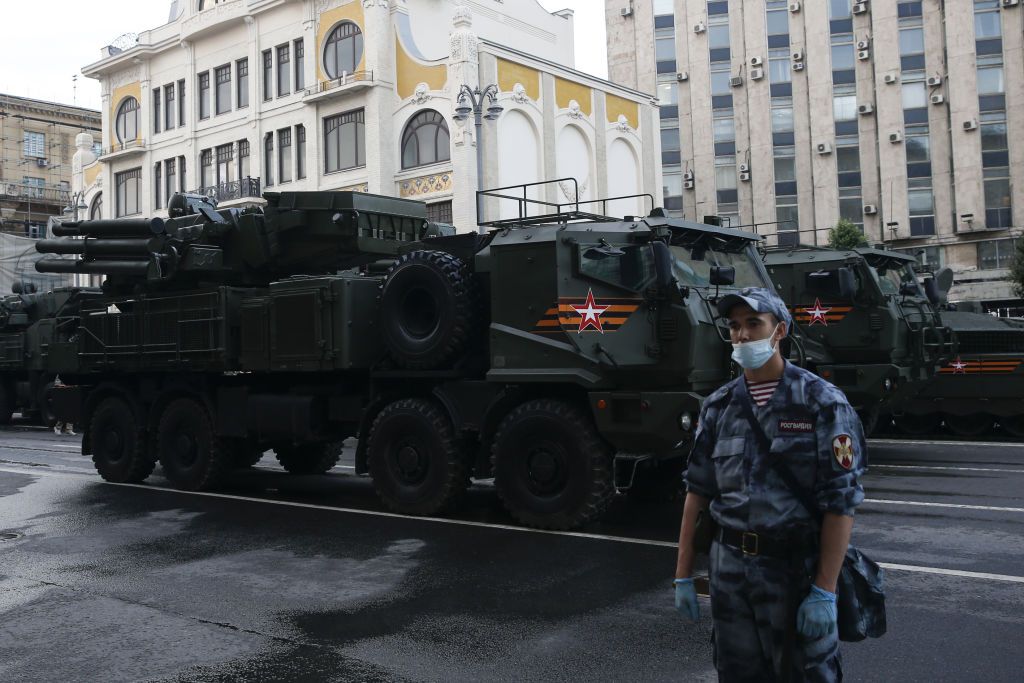The Ukrainian military allegedly hit a Pantsir S-1 anti-aircraft missile system in the village of Dubovoe in Belgorod Oblast, Russia. The air defense system was operating in the region when several aerial targets were downed as they approached the city of Belgorod. As a result of the attack, grass was set on fire near the village of Dubovoe, and the roofs of two houses and 17 cars were also damaged. Belgorod Oblast Governor Vyacheslav Gladkov claimed that the fire was promptly extinguished, and no casualties were reported. The Russian media outlet Pepel later claimed that the Pantsir system was hit by a cluster munition, but Ukrainian authorities have not commented on the attack.
The incident comes amidst rising tensions between Ukraine and Russia, with claims of missile and drone attacks against Russian regions becoming a common occurrence. Ukrainian military intelligence sources reported that “kamikaze” drones attacked a metallurgical plant and other facilities used for military purposes in Russia’s Belgorod, Voronezh, and Lipetsk oblasts. The Ukrainian military had allegedly received permission from the U.S. to use American weapons to strike targets in Russia across the border from both Kharkiv and Sumy oblasts. These attacks highlight the ongoing conflict between Russia and Ukraine, with both sides engaging in military actions across their shared border.
The situation in the region has become increasingly volatile with incidents of alleged attacks on both sides. The use of drones and missiles to target strategic locations in Russia’s border regions is a significant escalation in the conflict. The Ukrainian military’s alleged actions demonstrate their willingness to engage in offensive operations against Russian targets, potentially leading to further retaliation from Russia. The lack of official comments from Ukrainian authorities on these attacks adds to the ambiguity surrounding the situation and raises questions about the motivations behind these military actions.
The impact of these attacks extends beyond the direct damage caused to the targeted facilities and equipment. The use of cluster munitions and “kamikaze” drones indicates a willingness to cause significant damage to military infrastructure in Russian regions. The crossing of borders and targeting of specific locations adds a new dimension to the conflict between Ukraine and Russia, potentially leading to further escalations and retaliatory actions. The international community will be closely monitoring the situation and its implications for regional stability and security.
The need for independent journalism in Ukraine is highlighted by the limited information available about these attacks and the conflicting reports from various sources. Independent media outlets play a crucial role in providing accurate and unbiased reporting on complex geopolitical events like the conflict between Ukraine and Russia. By supporting independent journalism in Ukraine, individuals can contribute to a better understanding of the situation, hold authorities accountable, and ensure that accurate information is disseminated to the public. Joining the fight for independent journalism in Ukraine is essential for promoting transparency, accountability, and peace in the region.
In conclusion, the alleged attack on a Pantsir anti-aircraft missile system in Belgorod Oblast, Russia, by the Ukrainian military underscores the ongoing conflict between Ukraine and Russia. The use of drones and missiles to target Russian facilities in border regions signifies a dangerous escalation in tensions between the two countries. The lack of official comments on these attacks and conflicting reports from different sources add to the complexity of the situation. Supporting independent journalism in Ukraine is crucial for gaining a deeper understanding of these events, promoting transparency, and upholding democratic values in the region.


